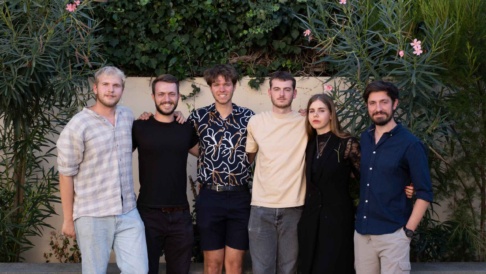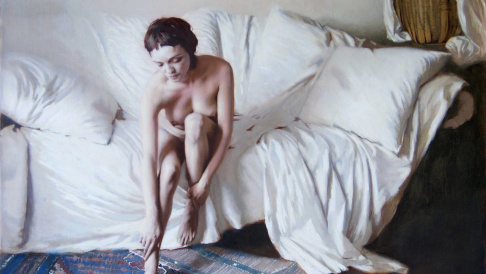Class Commitment
& Enrollment
Class Commitment
The academic year is divided into three 11-week trimesters; 36 hours per week of instruction. Students receive one critique during each class from course instructors. They work half day on studio projects (Bargue drawings, the cast, still life or portraiture); they spend the other half day in the model room working from the figure. This requires the student to stand 6 to 8 hours daily. Anatomy and Art History lectures, and Ecorché Sculpture, take place weekly; technical demonstrations on methods, materials and techniques, and classes in composition take place during the term. In order to graduate, students must complete successfully all required exercises as listed in the Drawing & Painting and Sculpture curricula.
Studios
Students work under natural north facing light in shared studios with sufficient space between the student and subject to work in sight-size. Several instructors work in studios on school premises allowing students to benefit not only from daily direct instruction and critique, but from watching the professional artist at work.
Figure
Beginning, intermediate and advanced students draw, paint or sculpt from the model 3-6 hours per day, five days per week. Poses range from two-hour pencil drawings emphasizing line, to long poses lasting three hours per day for four or five weeks to obtain a fully finished, accurate drawing, painting or sculpture, and 10 weeks for a life size sculpture. Students in Advanced Painting work from the portrait model a minimum of six hours per week. All students attend additional life drawing classes in the evening.
End of Term Critique
At the end of term each student receives an individual and personalized critique conducted by the course instructors, in which they are graded on a scale of one to three in five areas (attendance, performance, effort, attitude and progress), and awarded final score. The Academy thus monitors the student’s progress through the curriculum’s established set of exercises. A student’s promotion to the next trimester is determined by the instructors after the final critique.
Students
There are currently 100 students enrolled in the Florence program, and 27 students in Mölndal, from 35 different countries. Students who apply to The Florence Academy of Art have an intense desire for this specific training. They seek the language of Velasquez, Rembrandt, Titian and Sargent, and the tools to convey their ideas with confidence through the oil or clay mediums. A common visual aesthetic draws them to the classical world (and its renaissance in Florence) to build an artistic vocabulary where beauty and ideas are intrinsic to art. Beginning students are encouraged to observe and learn from the work of the more advanced who, in turn, have the opportunity to work as assistant instructors.









